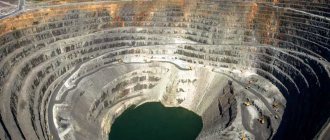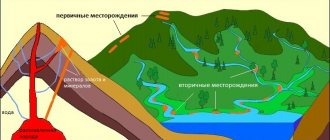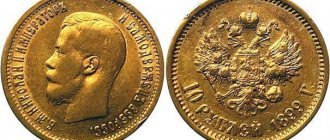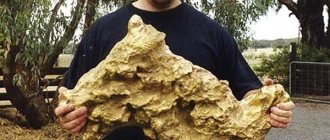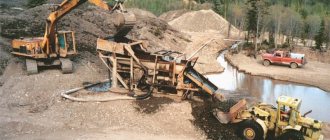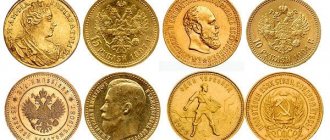Historical information
The first deposits in Russia were discovered in the 18th century. This fact is associated with a situation where one worker found what he thought was the most ordinary stone in the Yekaterinburg district. He reported the discovery to an employee of the Office of the main plant of this city. The worker then continued excavating the area where he found the first element. The minerals contained small grains that looked like gold. Later this deposit was called Initial.
Back in the 5th century, places in Russia were identified where it was already possible to extract gold. Historians have noted the mountain systems of the Urals, because the peoples living in this territory had jewelry made of precious material. The search for new places began only in 1719, after the decree of Peter the Great. And already in the first half of the 19th century, Russia was recognized as a leader in the extraction of minerals.
Over time, technologies developed that made it possible to move from the Ural Mountains to Western Siberia. After the Witte reform, the first coins were minted from precious substances, and the mines became available to foreign miners. At the beginning of the 21st century, there were already about 5,800 gold deposits in the Russian Federation.
Gold mining in Russia: features, history and interesting facts
Source: FB.RU
Author: Tatyana Politikova
Gold mining in Russia is an important industry that has not received due attention for a long time. The mines developed during tsarist times were destroyed during the revolution and the Civil War. The Soviet period also did not bring prosperity to the industry. Perhaps new economic conditions will be able to streamline the production system.
The legend of the discovery
The history of gold mining in Russia, according to the official version, began in the 18th century. It is believed that the start was a small pebble found by a schismatic in the area of present-day Yekaterinburg. For some reason, he reported the find to the administration of the Yekaterinburg plant. He continued his search and discovered many such stones. Later, the “Primary” gold mine was founded on the site of the finds.
The fact that gold mining in Russia could become a large-scale industry has been mentioned since the fifth century. This was reported by many historians who visited the regions of the Ural mountain system and observed among the indigenous peoples a large amount of jewelry and household items made from precious metal.
The foundation of the industry on a national scale was laid by Peter the Great in 1719. At the beginning of the 19th century, Russia became a leader in the development and production of gold. After the reform carried out by S. Yu. Witte and the introduction of the “gold standard”, gold coins began to be minted in Russia, and mines became available for development by foreign companies and private individuals.
After the revolution
After the 1917 revolution, gold mining in Russia was left to chance for many years. For a long time, the state did not pay any attention to the industry, relying not on the development of known deposits and the exploration of new ones, but on the expropriation of gold and products made from it from the population. The Committee on Precious Metals was created in 1918, but it was not immediately possible to restore order and register the mines.
The main gold mining sites in Russia were in the Urals, in Siberia, where the new government did not reach immediately. The working mines and mines were transferred either to the “whites” or to the “reds”. Opponents destroyed equipment, flooded mines and dispersed miners' artels. During the Civil War, the industry was practically destroyed. Even during the First World War, gold mining in Russia declined. For example, in 1918 the country received only about 30 tons of metal, but in 1913 the amount reached almost 64 tons per year. In subsequent years, production steadily declined. In 1920, 2.8 tons were mined, and in 1921 only 2.5 tons of precious metal were obtained from prospectors.
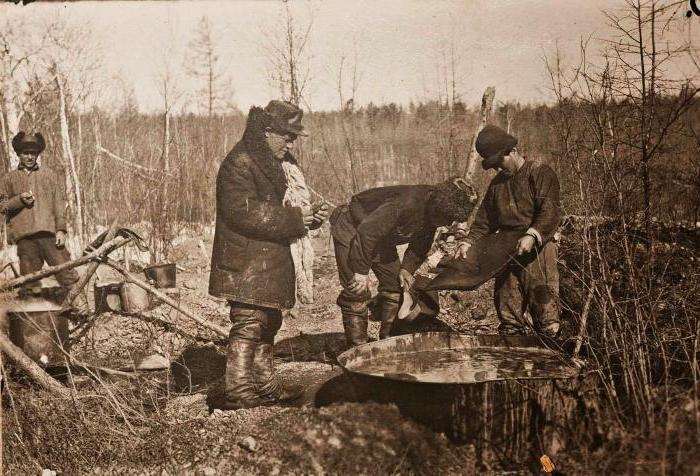
Falling fishing performance
In the period from 1918 to 1922, the Soviet government received about 15 tons of gold from gold mines; during the same period, 15.7 tons of gold and products were confiscated from the population. According to unofficial data, the amount of “voluntarily given” was much greater; according to experts, about 500 tons of metal were exported through the Baltic countries during the same period. In 1921, the state carried out a monetary reform based on the “gold standard” formula, i.e. funds had to be again backed by gold reserves.
By 1922, it became clear that all known deposits had already been depleted, the data of many geological explorations had been lost, and new expeditions were not being carried out. The fact was stated in 1924. In light of the implementation of steps to restore state control over production, Glavzoloto was endowed with exceptional powers, capabilities, and credit funds. In 1925, a plan was prepared, the main emphasis in production was on encouraging working artels, and the priority development of state organizations over private ones was determined.
Pre-war period
In 1927, Glavzoloto was reorganized into Soyuzzoloto, and organizational measures were taken to create a geological exploration service and train new personnel. The first measure to stimulate mining was the development of a system of financing and encouraging private gold mining and small gold mining enterprises. In 1923, gold mining began in the Aldan River basin (Yakutia). They say that gold could be collected by hand. The main gold mining in the region was carried out by the Aldanzoloto trust.
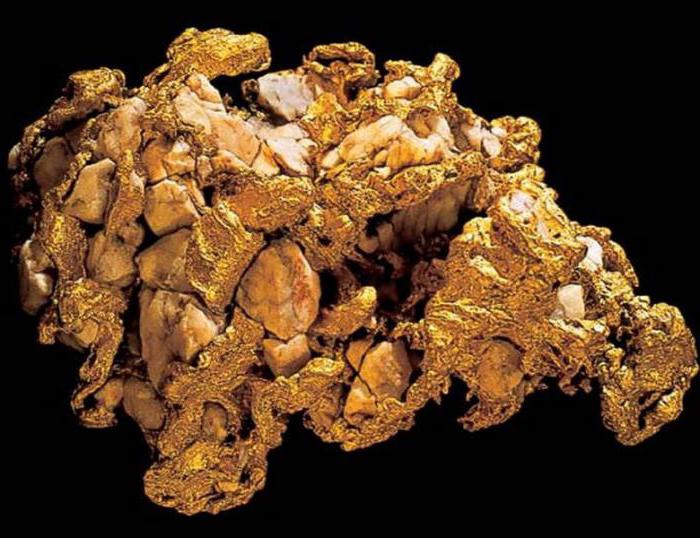
Over two years (1927-1928), production of the precious metal increased by 61%. In 1929, more than 25 tons of pure gold were mined in the country, most of it brought by government organizations. The next significant increase in the volume of gold produced occurred in 1936 and 1937 and amounted to 130 tons; Russia took second place in gold mining in the world ranking.
By the beginning of the war, the fishery supplied the state treasury with about 174 tons of precious metal per year. Most of the reserves were used to purchase equipment for industry, ensuring the industrialization and independence of the USSR.
War period and post-war years
Gold mining in Russia has always been a classified industry. During the war years, the level of secrecy was increased; what the industry's performance was during this period is not reported in open sources. It is known that the level of gold sales exceeded the production rate. The state stimulated all artels (primarily private ones). The workers were provided with food and bonuses. Despite the gravity of the situation, capital construction was carried out and production capacities were updated. The Soviet Union paid about 1.5 thousand tons of gold for lend-lease deliveries.
In the post-war period, there was an urgent need to restore the economy, rebuild cities and give the people the opportunity to settle down after a devastating tragedy. The history of gold mining in Russia during this period is colored with gloomy colors - the industry was placed under the supervision of Glavspetsvetmet, which belongs to the Ministry of Internal Affairs.
In a short time, camps were organized where prisoners served their sentences in gold mining. There were about 30 ITLs operating in the system, specializing in the development of precious metal deposits. This move brought gold production to a record high with minimal financial costs, all paid for by thousands of prisoners' lives. By 1950, 100 tons of metal were mined in the country. The gold reserves in 1953 were a record in the USSR and amounted to 2049 tons. This figure has not yet been exceeded.
The period of N.S. Khrushchev's reign was characterized by many surprises. For the world community, the main one was the active and significant sale of gold on world markets. The West viewed large injections of gold into the market as peaceful aggression by Russia. The bulk was spent on purchasing food. The largest intervention of Russian gold occurred in 1963, when 800 tons of metal were spent on the purchase of grain.
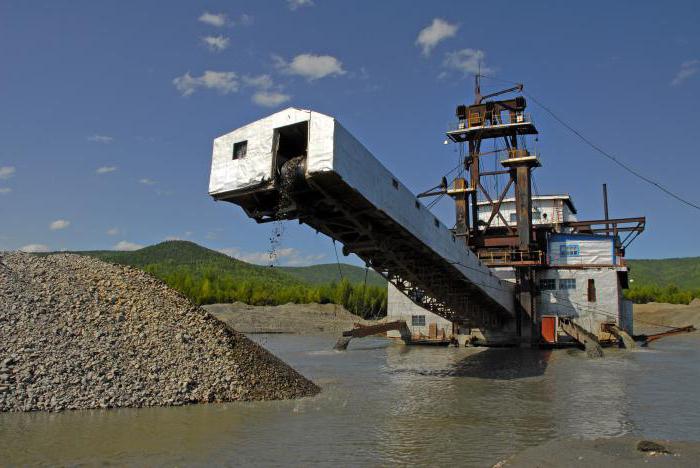
Our days
During the reign of L.I. Brezhnev, gold mining in Russia was not going through the best period; the industry did not receive due attention. A large amount of precious metal reserves went to foreign markets for the purchase of food, while the level of production invariably fell. In 1988, the approach to supplying the industry was revised, reorganization took place, and production levels began to increase. In 1990, it reached a respectable level of 300 tons.
The perestroika period was chaotic for the entire economy, including the gold mining industry. Metal sales on foreign markets grew despite a sharp drop in output. The most critical year was 1998, production amounted to only 115 tons. With government intervention in fishing, the situation began to level out, but a unified system has not yet been developed. Gold is an important financial component of GDP, but there is no unified policy yet. At the beginning of the 21st century, there are almost 6 thousand deposits in Russia.
The largest gold deposits in Russia
In the modern world ranking of gold reserves in the ground, the Russian Federation occupies fourth position. The largest gold mining sites in Russia are concentrated in Siberia and the Far East. Intensive development and extraction of the precious metal is carried out at several mines, from where the gold reserves are replenished.
Areas where mines are being developed:
- Khabarovsk region.
- Amur region.
- Magadan Region.
- Krasnoyarsk region.
- Saha Republic.
- Chukotka Autonomous Okrug.
- Sverdlovsk region.
- Buryatia and others.
A significant mass fraction of gold comes from large mines:
- Solovyovsky.
- Dambuki.
- Ksenyevsky.
- Altai.
- Nevyanovsky.
- Gradsky.
- Conder.
- Udereysky.

Private gold mining in Russia
Gold mining in Russia by private individuals has been prohibited since 1954. Stalin's times were prosperous for prospectors. By government decree, additional benefits and bonuses were introduced for them, and the right to use the best gold-bearing areas was granted. To stimulate work, apartments, vouchers to holiday homes, etc. were distributed. In the pre-war period, any adult who had no criminal record could obtain a gold mining permit.
The number of miners working alone or in private cooperatives reached 120 thousand people. Numerous specialized points accepted the mined metal. Thanks to the efforts of private owners, many new mines were discovered and equipped; they subsequently came under the control of government agencies. During the period of operation of private enterprises (1932-1941), the amount of gold mined increased fivefold.
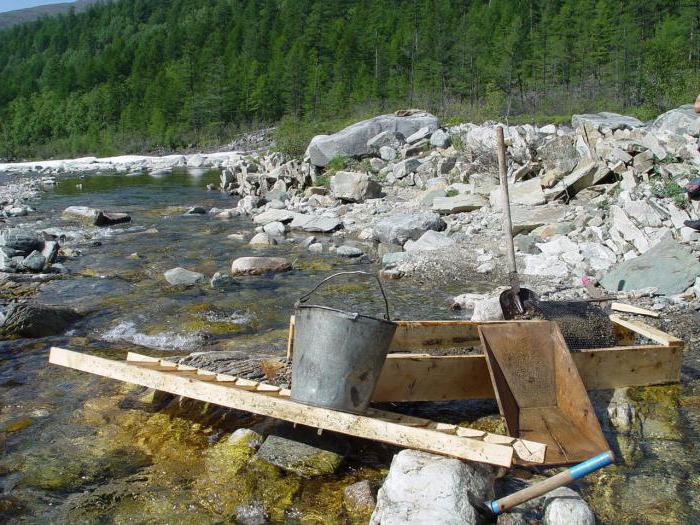
Russian gold
According to global results for 2021, Russia ranks third in the production of gold from mineral raw materials and has reached second place in total production of the precious metal. According to S. Kashuba (Chairman of the Union of Gold Miners of Russia), it was expected that the production level for 2021 would be about 297 tons, with a slight increase in production planned for 2017.
Successful projects in 2021 were the development of the Pavlik deposits in the Magadan region and Ametistovoe in Kamchatka. Exact information about the results of 2021 has not yet been made public. What is the total investment in gold mining in Russia is unknown.
According to official data, in 2015, Russia's annual gold production amounted to 294.3 tons of metal, which improved the previous period's figures by 2%. In 2021, Dmitry Medvedev signed amendments to the law “On Subsoil”, which allow private individuals to engage in gold mining.

Amendments to the law: pros and cons
From 2021, private gold mining is allowed in Russia. The law provides for the lease of 15 hectares of territory for five years, where, according to experts, there is up to 10 kilograms of gold. There are a number of restrictions during development:
- Gold can only be mined superficially.
- Blasting operations are prohibited.
- The depth to which you can dig is 5 meters.
The Magadan region was chosen as the testing ground for the pilot launch of the project, where 200 sites were counted that are ready for private development. The government views this step as a social project. The population of the northern regions is in dire straits. Most are unable to find decent work, and gold panning has long been a traditional way of earning a living. Illegal business is still thriving; after the amendment is adopted, many will have the opportunity to work within the legal framework, and the state will receive additional income.
There are fears that a rampant crime and theft will begin, which took place in the Magadan region in the 90s, when a local law on private gold mining was adopted. The FSB and the Ministry of Justice opposed the adoption of the amendment. Many people express the opinion that private practice will not solve the problem of unemployment. Proposals are being made to open several of the hundreds of frozen deposits, which will make it possible to employ thousands of people and receive an influx of population to the Magadan region.
Precious metal deposits
Today, Russia ranks fourth in the world ranking for gold mining. Many mines are scattered throughout the country, but 75% of the precious substance is collected in only two regions - Siberia and the Far East. The main volumes come from excavation sites located in the following areas:
- Krasnoyarsk;
- Khabarovsk;
- Irkutsk;
- Amurskaya;
- Sverdlovsk;
- Magadan;
- Republics of Buryatia and Sakha.
There are several mines located in the state that are still being mined. Experts mine the bulk of gold in the following places:
- Solovyovsky;
- Udereysky;
- Ksenyevsky;
- Nevyanovsky;
- Gradsky;
- Dambuki;
- Conder;
- Altaic.
The oldest source of gold in the Amur region is Solovyovsky. Even today it makes it possible to extract a significant amount of placers of precious minerals. The deposit was discovered in 1866 , but it has not yet been fully developed. The Udereysky mine is located in the Krasnodar region. This is a very young source, but over the course of 2-3 decades it has consistently produced a lot of gold.
In 1813, the Nevyanovsky deposit was discovered, but this fact was hidden due to the fact that gold was discovered at the same time in the Ksenyevsky mine. The government of the Russian Empire privatized all enterprises that were located near the last source. A commemorative medal was cast from the first precious ingot found in Nevyanovka.
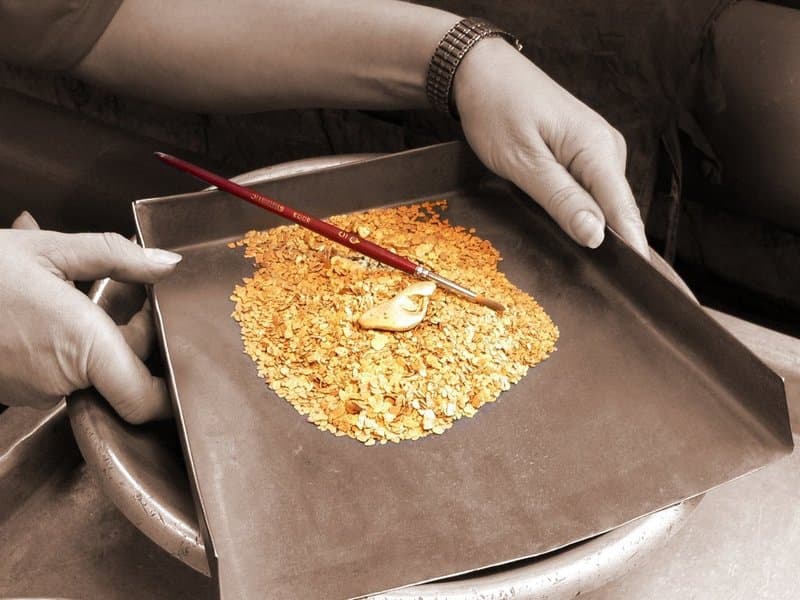
In addition to metals, diamonds were discovered in the Gradsky mine in the 30s of the 19th century. And in the Dambuki source two deposits are connected at once, which have been developed for hundreds of years. In 1969, the Konder mine became the main source of gold in the Amur region. Over the entire period of operation, more than 150 tons of precious metal were supplied to the market from it. Today, platinum is also mined at this mine.
The Republic of Buryatia
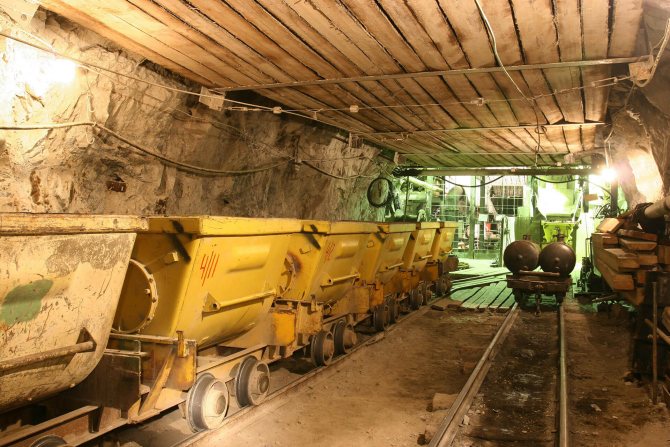
The gold mines of Buryatia produced 5.6 tons of precious metal last year. One of the richest is Kedrovka. Old-timers of Buryatia also enthusiastically recall the absence of legal punishment for personal finds. In difficult post-war times, found grains of gold were the main income of many families, and parents and children went in search: if you find it, hand it over, you will get money, many remember. Now, to the question “Where can I find gold in Buryatia?” It’s difficult to give a definite answer; most of the deposits are owned by large industrialists, but local residents talk about finds in the rivers of the Khorinsky and Eravninsky districts.
Leading companies
The development of the gold mining industry depends on the functioning of companies that develop deposits. This area is well developed in the Russian Federation; new organizations are constantly appearing on the precious metals market. The leader in the country is the open joint stock company Polyus Gold.
The company has been developing ore and placer deposits in the following areas for a long time:
- Irkutsk;
- Krasnodar;
- Magadan;
- Amurskaya.
In the Irkutsk Territory, the springs are located at the mouth of the Vitim River, in the Verninskoye, Western and Chertovo Koryto regions. The Olimpiadinskoye and Blagodatnoe fields are located in the Krasnodar region. It is engaged in the extraction, development and production of gold in Russia, and in metallurgical excavations. It processes raw materials for the ferrous metallurgy, and its subsidiaries are located in several countries:
- Ukraine;
- France;
- Kazakhstan;
- USA;
- SOUTH AFRICA;
- Italy.
The organization includes several enterprises: Buryatzoloto, Severnaya Zolotorudnaya, Celtic Resources. Severstal took second place among other companies in terms of volumes of precious material found.
Organizations that find gold mining sites in Russia are focused on developing only the domestic market. Only those companies that pooled their strength and financial resources were able to reach the international level.
Production volume
A country’s place in the world ranking depends on the volume of gold it produces. In recent years, the amount of precious minerals mined in the Russian Federation ranges from 220 to 250 tons. The state ranks third on the list, behind only China and Australia.
In the first months of 2021, the volume of metal found increased by 18 tons, with a significant increase observed in the northern regions. The level of production of the substance in the Chukotka region increased by 7.5 tons. Individual regions of Russia produce so many minerals that in total their quantity is equal to global indicators. Every year the level of gold production increases by one quarter.
Indicators of specific areas for the last year in tons:
- Krasnoyarsk Territory - 47.6;
- Chukotka - 24.6;
- Sakha - 22.3;
- Magadan - 21.4;
- Irkutsk region - 20.7;
- Khabarovsk - 20.5.
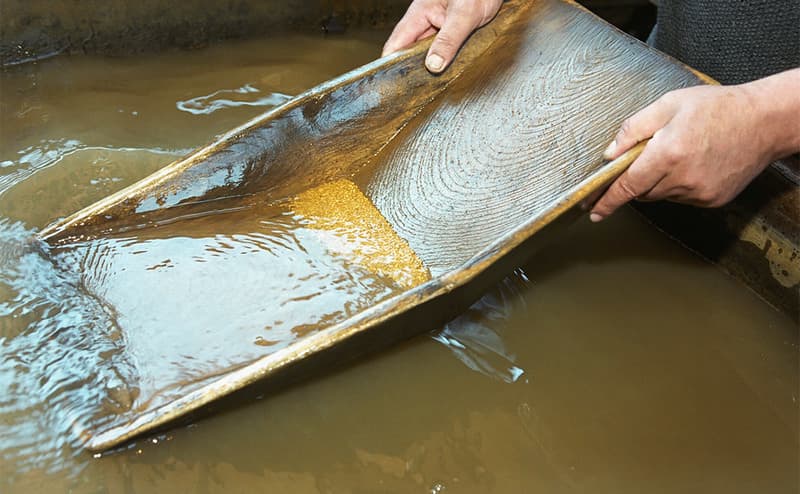
A smaller amount is mined in Transbaikalia - 9.5 tons, 6 tons each in Buryatia and the Sverdlovsk region. In Chelyabinsk, sources produce 5.3 tons per year, in Kamchatka - 2.5. In Tyva, Khakassia and Altai, gold is obtained in the amount of 2.2, 1.6 and 1.5 tons, respectively. There are other regions from where gold miners obtain precious material. But they provide significantly less metal than large sources.
Processing methods
Methods for extracting this precious mineral have changed over the centuries. At first, people found springs on the banks of rivers and lakes and sifted sand through a fine sieve. There were grains of gold left in the container. Then they learned how to extract material from ore. Modern technologies make it possible not to use the manual method, since all processes have long become mechanized.
The choice of extraction methods depends on the type of deposit. If it contains three grams of gold per 100 kg of starting material, then this is considered a normal indicator. If 10 g is detected, the source is called rich.
Recently, the amalgamation method has begun to be used, in which mercury is placed at the bottom of a deep barrel, and then gold-bearing rock is added and shaken. At the end of the procedure, pieces of the precious substance stick to the bottom of the container. But they note a significant drawback of this method - the high toxicity of mercury, which negatively affects human health.
Therefore, they began to extract gold from ore using sodium cyanide. The substance is capable of completely converting even the smallest grains of metal into water-soluble chemical compounds. This method allows you to obtain minerals even from abandoned sources, turning them into profitable deposits.
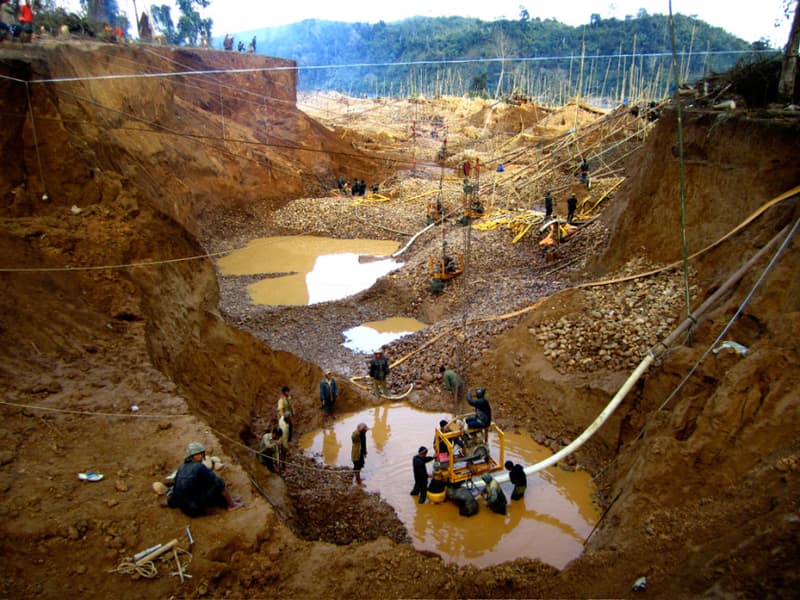
It is convenient to use dredges—floating mining machines—to search for gold. They are specially equipped to extract precious minerals from the depths of the earth. The mechanisms also enrich minerals and remove waste rocks from the soil. It is these three methods that are used in gold mining in the Russian Federation.
Registration of a license
According to the current legislation of Russia, all companies that know where and how gold is mined and are engaged in this work must obtain a license. This document is also necessary for companies that sell and dispose of precious substances.
The Federal Law “On Licensing of Certain Types of Activities” specifies a special procedure according to which a certain list of enterprises working with precious metals must have the appropriate documentation.
Entrepreneurs can also obtain a license, but this is a very painstaking procedure. Completing the documentation will require not only time and patience, but also a fairly large amount of money. Therefore, private entrepreneurs rarely direct their activities to the extraction of precious metals, because this does not always pay off. Some deposits can produce fossils for 2-3 weeks and then turn out to be empty. This will lead to bankruptcy of the company, losses and problems with legislation.
Therefore, small firms prefer to form an alliance and develop new sources together. All specialists can work in one mine at the same time or disperse their forces in different deposits, trying to get more gold in the same period.
Entrepreneurs have more than once turned to the authorities with a request to simplify the procedure for obtaining a license, because this requires collecting a large package of documents and personally visiting many authorities. Perhaps legislators will eventually listen to their requests and allow them to quickly legalize the activities of companies in the field of gold mining. This will increase the number of companies that will replenish the precious metals market with yellow minerals.
Changes in laws. Gold mining for individual entrepreneurs and individuals
From the moment when amendments were made to the legislative framework, private individuals were allowed to mine gold only in those regions where industrial mining is not carried out. We are also talking about the extraction of valuable minerals, diamonds, and other treasures. The Law on Precious Metals and Minerals does not provide for the right of such mining to private individuals who have the status of individual entrepreneurs without registering a legal entity, but only to enterprises.

Gold mining by private owners can be carried out in volumes that are not comparable to industrial ones. In other words, an individual entrepreneur can mine host rocks, dumps, waste from mining corporations, substandard ore, written-off reserves, deposits of ores and gold sands of loose or bedrock type.
Federal laws regarding precious metals and stones should regulate unreported and untaxed gold mining. However, the voices of will, which are private traders, can hardly compete with large firms. Individual entrepreneurs can work in areas where large-scale mining has already been established or the availability of gold is in question.
Gold mining by individual entrepreneurs in registered areas, from some point of view, makes sense. The amount of metal in them is relatively small. Using industrial capacity to extract 10 grams of ore is, at a minimum, not profitable. But individuals should have quick access to subsoil, benefits and discounts when calculating taxes and fees.
Interesting: How much does a gram of gold cost in a pawnshop?
Metal mining is different from product manufacturing or marketing. Even if all the conditions are met, there may simply be no metal in the ground. On this side, mining is a very risky business.
Why were private owners allowed to mine?

In the Magadan region, one of the richest in gold minerals, there are many abandoned or exhausted sources. If private owners are allowed to mine in these areas, problems with the creation of new jobs in the region can be resolved.
According to statistics from the administration of the Magadan region, approximately 1,500 citizens are employed in the gold mining industry and have ever had such experience. Gold deposits are approximately 900 kg. It is not very profitable for large ones - in rich regions such a catch can be obtained in a month.

